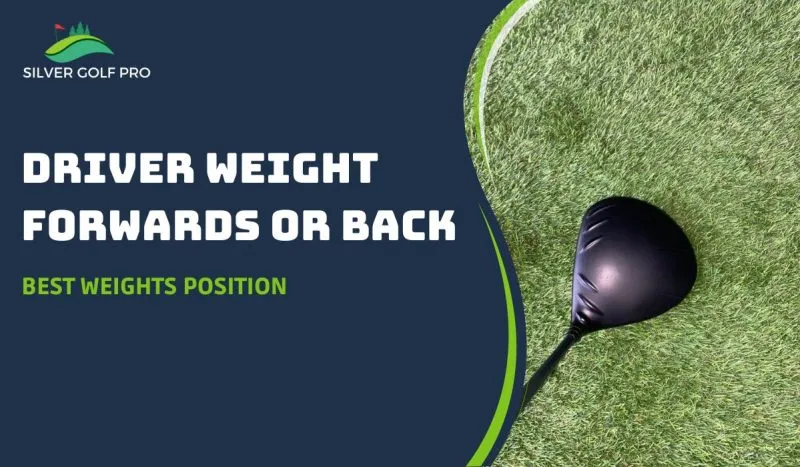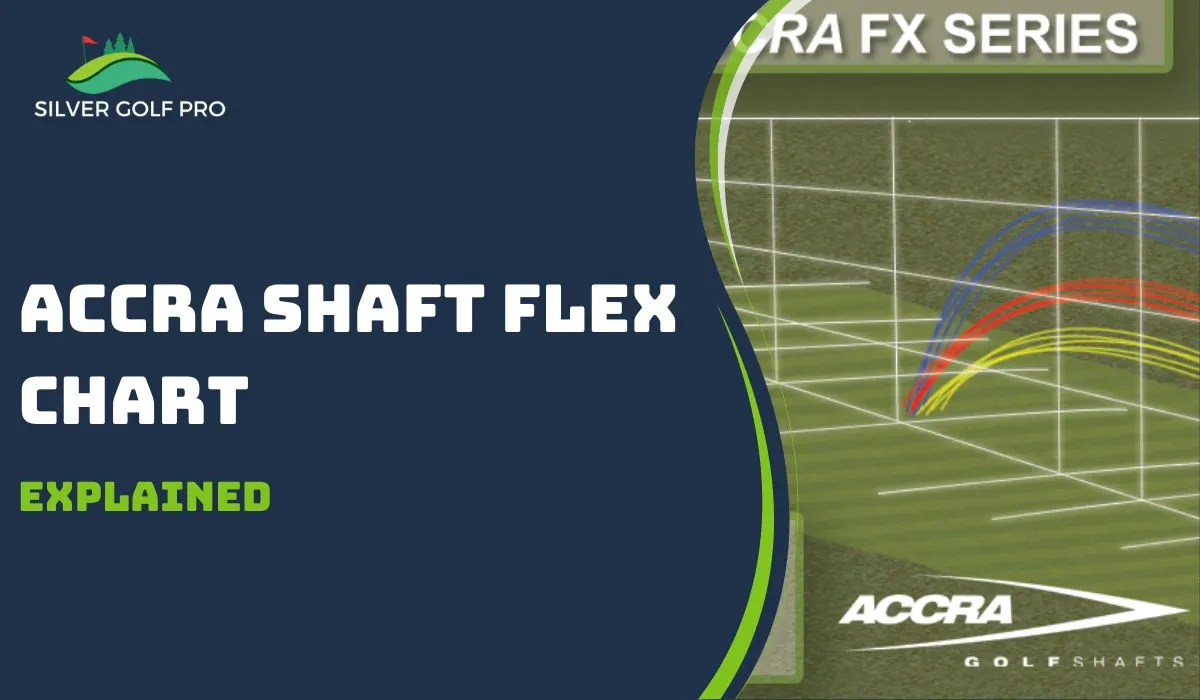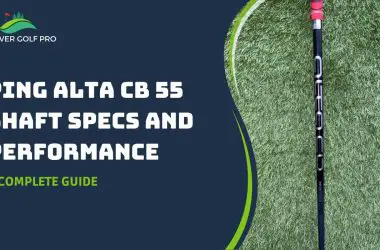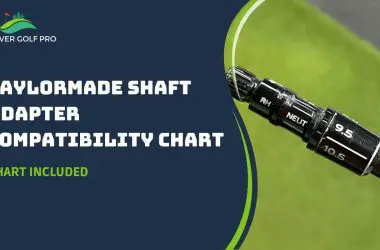The position of the driver’s weight can affect the loft, spin, and forgiveness of your shots. Generally, weight forward reduces loft and spin but also increases mishits. Weight back increases loft and spin but also improves stability. The best option depends on your swing speed, launch angle, and ball flight preferences.
PGA Tour statistics report that the average driving distance for professional golfers in the 2022–2023 season is 299.8 yards. However, this distance can vary significantly depending on the weight distribution of the driver head and shaft and the golfer’s swing properties. Through years of research and testing various driver head and shaft combinations myself as a former club fitter, I have found that weight distribution plays a crucial role in launch conditions and resulting distance and ways to use it to your advantage.
This article is a complete guide to driver weight placement. You will learn the science, advantages, and disadvantages of different weight settings and how to personalize your driver selection. You will also get tips on matching your driver head and shaft and choosing the best driver model for your swing.
Skip To Section Here
- 1 The Science Behind Weight Placement
- 2 Pros and Cons of Weight Forward Placement
- 3 Benefits of Weight Back Placement
- 4 Golfer Experiences: Real-Life Insights
- 5 The Perfect Marriage: Driver and Shaft Harmony
- 6 Tailoring weight placement to driver models
- 7 Personalization: The Ultimate Key to Success
- 8 Final Verdict: Decoding the Weight Placement Enigma
The Science Behind Weight Placement
The goal of the golf swing is to transfer kinetic energy from the body efficiently into the clubhead. This allows for maximum energy transfer to the ball at impact, achieving ideal launch conditions.
Weight distribution affects a driver’s center of gravity (CG), moment of inertia (MOI), and dynamic loft—technical properties that influence launch, spin, consistency, and distance.
Placing weight lower and farther back in the clubhead pushes the CG back. This increases the MOI and dynamic loft, resulting in shots that launch higher with more backspin. Conversely, weight positioned forward decreases the MOI and dynamic loft, launching shots lower with less spin.
Higher launch combined with lower spin provides the optimal trajectory for maximum carry and roll. Some drivers have movable weights, allowing golfers to address a slice or hook. Heavier weights toward the heel reduce outside-in ball curvature (slice). Lighter weights toward the toe help draw the ball more straight (reducing a hook).
Optimizing the CG and MOI through customized weight distribution maximizes distance potential while providing a more predictable ball flight tailored to each player.
Pros and Cons of Weight Forward Placement
The table below outlines the key pros and cons of placing the driver’s weight in a more forward position.
| Pros of Forward Weight Placement | Cons of Forward Weight Placement |
| Potential for longer drives due to lower spin rates and ball flight into the wind | Less forgiving of mishits, which can lead to shorter drives. |
| Improved draw bias and gear effect for slicing players | Increased sensitivity to mishits challenges consistency. |
| A higher MOI benefits fast-tempo players. | Heavier heads may slow the swing speed of moderate or slow swingers. |
| Enhanced ball speed for players with faster swings | Slower swingers struggle to launch the ball and may lose distance. |
| A lower launch angle provides a lower-flying, penetrating ball flight. | Risk of pushing shots for players susceptible to that miss |
| Easier to close the club face at impact. | Loss of carry and total distance are possible for moderate or slow swingers. |
| May feel more powerful for some players. | Requires more precision and player ability to realize potential benefits. |
Benefits of Weight Back Placement
By placing more weight towards the rear of the driver’s head, you can optimize your game in several ways. The Ping Alta CB 55 is an example of a driver that has weight in the back of the shaft, unlike Titleist T100s whose weight is evenly distributed.
1. Enhanced forgiveness and consistency on slight mishits
When the weight is positioned more toward the rear of the driver’s head, it acts as a counterbalance to off-center strikes at impact. This counterbalancing effect makes the face less likely to twist on mishits, reducing the spin effect that can cause shots to fly off line.
With the weight acting as a stabilizer, even shots struck just off the sweet spot will maintain a straighter, more predictable ball flight. Studies have shown rear weighting can increase the driver’s “forgiveness zone” by as much as 20% compared to more front-weighted designs.
2. Increased dynamic loft and carry distance
Having extra weight positioned behind the clubface allows it to more easily open up at impact for increased loft. This dynamic loft optimizes the angle of attack for higher, longer trajectories.
On average, golfers can see an increase of 1-3 degrees of loft at impact from weight-back designs, resulting in 10–30 extra yards of carry depending on clubhead speed. The higher launch and ball speeds from the added loft combine to maximize distance for long-hitting accuracy.
3. Increased stability on mishits
With more of the driver’s mass located rearward instead of forward or heel/toe weighted, there is less tendency for the face to twist on off-center strikes. This keeps the face square at impact, so off-center shots don’t fly off unpredictably to the left or right.
The rear-weighted design promotes more consistent ball flights even when contact is made below the ideal center-face position. More stable face dynamics increase accuracy from a wider area of the clubface.
4. It helps players with varying swing speeds and tendencies.
Slower swingers especially benefit from rear weighting, as it promotes the higher launch angles needed to maximize their distance potential. Faster swingers still gain accuracy from the larger forgiveness zone.
Additionally, golfers with steeper or flatter attack angles tend to prefer more loft, which weight back placement enhances. The adjustability of modern drivers allows tailoring the setup to an individual’s unique swing traits for maximum performance at any skill level.
Golfer Experiences: Real-Life Insights
Golfer testing provides valuable real-world perspectives on how driver weight placement impacts performance. Several golfers shared their experiences experimenting with weight distribution in driver forums.
- One golfer experimented with moving weights between the front and rear positions of his Cobra F6 driver. He found the longest drive of his career at 310 yards using front weight, but rear weight provided more consistency over multiple rounds as it was more forgiving of mishits.
- Another golfer discussed hitting with a Fly Z driver that had 16g of weight in the rear position, which Cobra engineers called the “hot setup. He found this configuration to be the most dependable and forgiving out of the various drivers tested.
- A 100-mph swinger commented that drives over 300 yards are rare for him. After testing front and rear weight in an F6, rear weight produced fewer of his shortest drives and kept his longest drives nearly as far, concluding rear weight is more forgiving.
- One golfer agreed that weight forward produces low-spin, long drives but with less forgiveness than other driver designs. Multiple variables like loft, weight placement, shaft, and settings all impact performance differently between individuals.
- Testing various drivers, shafts, and weight configurations, golfers found rear and low placement provided the most consistency while still allowing for mid-to-low spin and high trajectories depending on the individual player.
The Perfect Marriage: Driver and Shaft Harmony
When choosing a driver, it’s important to consider how the head and shaft work together to maximize performance. These two key components have a symbiotic relationship, with the head distributing weight and the shaft transferring energy from the swing. With proper matching, they can optimize launch conditions to fit your individual game.
The driver head’s weight placement affects launch angle, spin rates, and forgiveness. Heavier weights positioned forward create more spin and a higher launch, while rear weighting has the inverse effect. These changes influence the ideal shaft’s properties.
A shaft’s kick point, weight, and flex all impact how energy transfers from the swing to the head. A lower-kicking shaft suits forward-weighted designs by promoting more launch and spin. Conversely, a shaft with a higher kick point pairs well with rear-weighted heads to lower spin for distance.
Seeking guidance from a certified club fitter allows you to test different shaft options to find the perfect match for your swing. Variables like swing speed, tempo, angle of attack, and ball-striking tendencies help determine which shaft’s properties will maximize your driver’s performance. The fitter can recommend models and flexes tuned for weight placement.
With new adjustable drivers, you can optimize the head for different conditions simply by changing weights. Having multiple shaft options lets you further dial in launch conditions, no matter the head setting. An ideal combination of shaft and head provides maximum forgiveness and distance potential.
Tailoring weight placement to driver models
Driver manufacturers design their models with specific weight configurations to optimize performance for different types of golfers. Careful weight placement is a key factor.
The TaylorMade SLDR, for example, features a sliding weight that allows golfers to adjust heel-toe placement to fine-tune shot shape according to their tendencies. Whether drawing or fading the ball, the SLDR can be tuned to suit an individual’s swing.
Meanwhile, Ping’s G25 features a deep, forgiving clubhead with low-forward weighting for increased launch and straighter ball flights. This configuration benefits players seeking easier launches without added spin for maximum carry.
Cobra’s Fly Z also utilizes adjustable weights, but with more options than most. Golfers can position its movable weight forward for a low-spinning, workable trajectory or rearward for increased height and forgiveness. The Fly Z caters to various swing profiles through its tuning adaptability.
In general, golf club manufacturers design drivers to suit different swing speeds. Slower swingers benefit from more rear weight to lower the center of gravity and launch the ball. Faster swingers benefit from more front weight and high weight to reduce spin and maximize distance. Manufacturers alter weight position and amount to tailor drivers for different swings to optimize launch conditions and performance.
Personalization: The Ultimate Key to Success
No two swings are exactly alike, so it’s crucial to consider an individual’s unique swing path, speed, and tendencies when choosing a driver. A driver best suited for one golfer may not provide the same results for another, so personalization is key to finding the right equipment.
Understanding one’s strengths and weaknesses provides valuable insight into how weight placement can be optimized. For example, a golfer with a fast swing speed may benefit from weight positioned more toward the face to promote higher launch angles and longer carries, while one with a slower swing may get more from weight positioned back for increased forgiveness on off-center strikes.
Objectives also matter when selecting weight placement. Do you tend to fade or draw the ball regularly? Do you prioritize maximizing distance or gaining straighter accuracy? Taking the time to analyze your game will help you identify the best weight setup to meet your particular needs on the course. While many options exist, focusing on personalization is crucial to achieving optimal performance from your driver.
Final Verdict: Decoding the Weight Placement Enigma
Driver weight can impact both the distance and accuracy of shots. Positioning more mass forward promotes higher swing speeds by promoting lower spin, but it reduces forgiveness and consistency. Such a setup often benefits golfers with quicker swing speeds the most. Meanwhile, weight placed more toward the back increases stability, launch angle, and forgiveness at the expense of some distance and higher spin.
Ultimately, the best weighting setup depends on the individual player’s priorities and abilities. Those focused on maximizing distance frequently prefer forward weights, while those that value forgiveness and accuracy would most likely choose back weights.
By finding the right combination matched to their game, any golfer can optimize driver performance to better enjoy the sport. Selecting the configuration best suiting one’s goals and style can lead to enhanced results and satisfaction.









